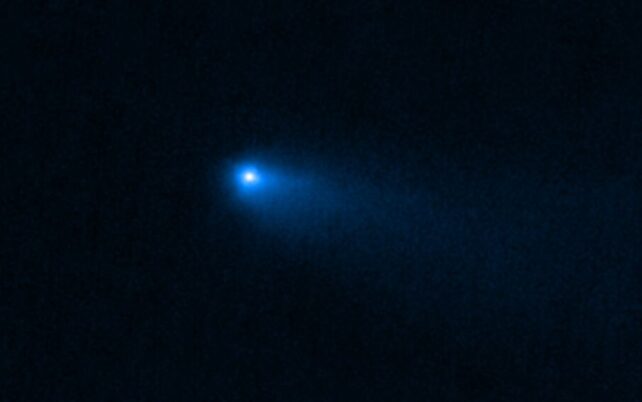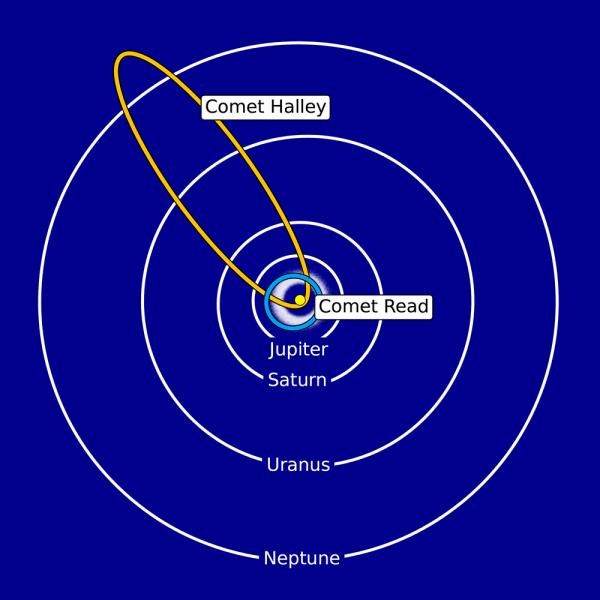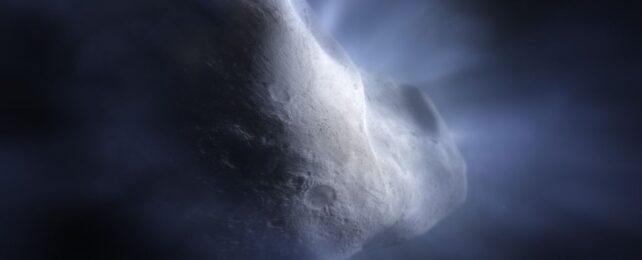There's a fair amount of water in the Solar System. Several moons and planets are loaded with it, while comets from the far reaches are packed with the stuff. Where it warms in the heat of the Sun, it sublimates into a gas that drifts into the vacuum of space.
While water ice has been detected in the Main Belt of asteroids, its vapor has been strangely missing until now. Thanks to the James Webb Space Telescope, we know water is in the asteroid belt.
The water is ejected by one of the rare comets in the Main Belt, an object known as Comet 238P/Read, revealing that water from the time of the Solar System's formation has been preserved there. Scientists had thought conditions might be too close to the Sun for much ice to remain.
The discovery also confirms that asteroid belt objects could have helped deliver water to Earth while the Solar System was still young and that Main Belt comets have enough ice for the outgassing that results when that ice sublimates under the Sun's warmth. Previously, only dust, not vapor outgassing, had been detected emanating from Main Belt comets.
"Since the discovery of main-belt comets, we have collected a substantial body of evidence that their activity is produced by sublimation, but until now, it has all been indirect," says planetary scientist Henry Hsieh of the Planetary Science Institute in the US.
"This new result from JWST represents the first direct evidence of sublimation in the form of water outgassing – or outgassing of any kind – from a main-belt comet, following studies dating back to 2008 to detect outgassing in main-belt comets using some of the biggest ground-based telescopes in the world."

Most of the objects in the asteroid belt are, unsurprisingly, asteroids, and these are relatively inert chunks of rock that just hang out in space. Comets, by contrast, are defined by their activity, which is also largely affected by their icy, dusty compositions.
They usually swing around the Sun on large, elliptical orbits that carry them from the outer Solar System. The ice inside them sublimates as they get close to the Sun (called a perihelion), creating a dusty, gassy atmosphere and long tails that stream away from the Sun.
There aren't many comets that we've detected in the Main Belt, but because they're so close to the Sun, relatively speaking, scientists weren't sure if they had enough frozen material to produce the sublimation seen in comets that come from greater distances.
Although Comet Read's orbit is entirely within the asteroid belt, that's still a relatively broad swath of the Solar System to move around, and the object still has a perihelion. During this part of its orbit, a team led by astronomer Michael Kelley of the University of Maryland used JWST to study it closely for signs of outgassing.

Using the telescope's near-infrared spectrograph, the researchers captured and analyzed the spectrum of light from the fuzzy haze that appeared around the comet during perihelion. Sure enough, the peaks in the spectrum revealed not just outgassing but the outgassing of water.
"In the past, we've seen objects in the main belt with all the characteristics of comets, but only with this precise spectral data from JWST can we say yes, it's definitely water ice that is creating that effect," Kelley explains.
"With JWST's observations of Comet Read, we can now demonstrate that water ice from the early Solar System can be preserved in the asteroid belt."
Oddly, something was missing. In a stark and puzzling contrast to other comets in the Solar System, in which carbon dioxide typically forms around 10 to 20 percent of their volatile substances, the researchers could detect no carbon dioxide wafting off Comet Read.
This compositional anomaly has two potential explanations, given that carbon dioxide ice sublimes more easily than water ice. One explanation is that the comet did have carbon dioxide but lost it all while retaining some water ice. Another is that the place in the Solar System where Comet Read formed was too warm for carbon dioxide, so it just never had any to start with.
Future work may be required to explore the likelihood of these possibilities. But the answers delivered by Comet Read have also given astronomers a lot to mull over.
"Water in main-belt comets is important because objects from the main asteroid belt have been proposed as a potential source of Earth's water in the early Solar System, where the modern-day Man-Belt comets appear to provide an opportunity to test this hypothesis," Hsieh says.
"This only works, though, if they do, in fact, contain water ice. The confirmation of water outgassing in at least one main-belt comet confirms that learning about the origin of Earth's water from main-belt comets is a viable possibility."
The findings have been published in Nature.
